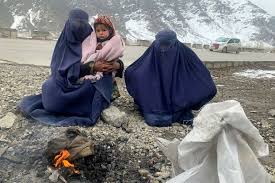By Aljazeera
In a world where crises compete for attention, Afghanistan, once at the forefront of international aid and media coverage, now sits in the shadows. This year, the global focus has overwhelmingly been on victims of wars in Gaza, Sudan and Ukraine.
The multiple crises that plague Afghanistan have barely registered in international media headlines, and yet they persist. Afghans endure worsening humanitarian, climate and economic crises, characterised by severe poverty, food insecurity and dwindling aid.
In 2024, 23.7 million people – more than half of the population – required humanitarian assistance. Reports show that Afghanistan has the fourth largest number of people facing severe hunger and food shortages. About 12.4 million Afghans do not know where their next meal will come from, placing their country among the top “hunger hotspots” alongside Palestine, Yemen, Haiti and Syria.
About 80 percent of families live on less than $1 per day per person. Nearly four million children, pregnant women and breastfeeding mothers are malnourished. These already dire circumstances are exacerbated by frequent natural disasters from which communities do not have the capacity to recover.
Earthquakes, floods and landslides regularly devastate the country. For instance, in October 2023, several magnitude 6.3 earthquakes struck Herat province, killing at least 2,000 people and injuring thousands more. More than 10,000 homes were destroyed and more than 20,000 severely damaged. At least 275,000 people were affected and were in need of assistance.
Despite some relief efforts in the immediate aftermath of the earthquakes, Herat remains devastated. Thousands of families are facing harsh weather for a second winter without permanent housing or proper access to water, food and sanitation. Destroyed schools have not been rebuilt.


